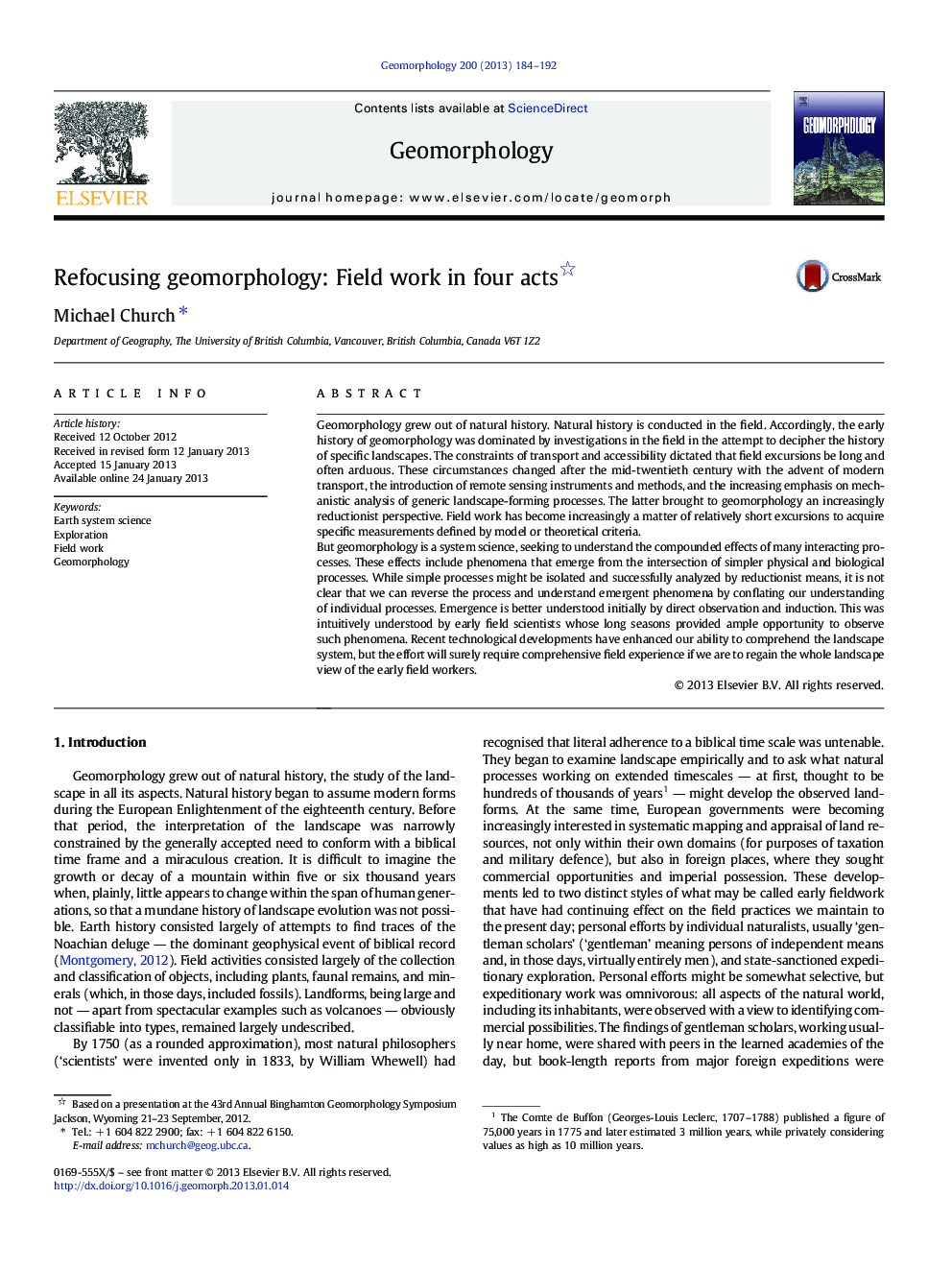| Article ID | Journal | Published Year | Pages | File Type |
|---|---|---|---|---|
| 4684699 | Geomorphology | 2013 | 9 Pages |
Geomorphology grew out of natural history. Natural history is conducted in the field. Accordingly, the early history of geomorphology was dominated by investigations in the field in the attempt to decipher the history of specific landscapes. The constraints of transport and accessibility dictated that field excursions be long and often arduous. These circumstances changed after the mid-twentieth century with the advent of modern transport, the introduction of remote sensing instruments and methods, and the increasing emphasis on mechanistic analysis of generic landscape-forming processes. The latter brought to geomorphology an increasingly reductionist perspective. Field work has become increasingly a matter of relatively short excursions to acquire specific measurements defined by model or theoretical criteria.But geomorphology is a system science, seeking to understand the compounded effects of many interacting processes. These effects include phenomena that emerge from the intersection of simpler physical and biological processes. While simple processes might be isolated and successfully analyzed by reductionist means, it is not clear that we can reverse the process and understand emergent phenomena by conflating our understanding of individual processes. Emergence is better understood initially by direct observation and induction. This was intuitively understood by early field scientists whose long seasons provided ample opportunity to observe such phenomena. Recent technological developments have enhanced our ability to comprehend the landscape system, but the effort will surely require comprehensive field experience if we are to regain the whole landscape view of the early field workers.
